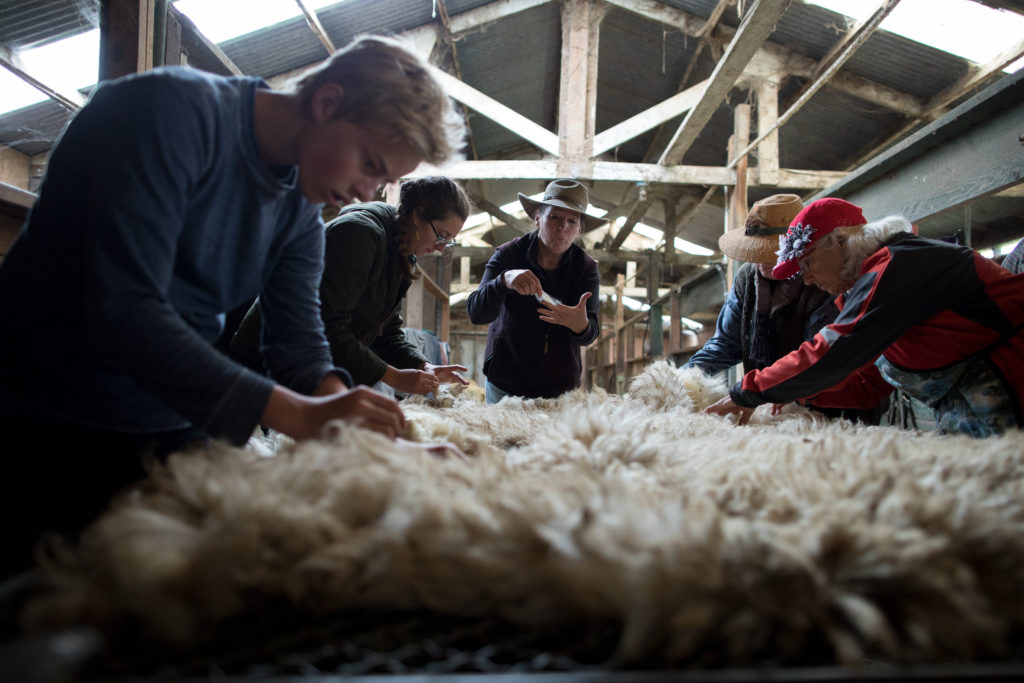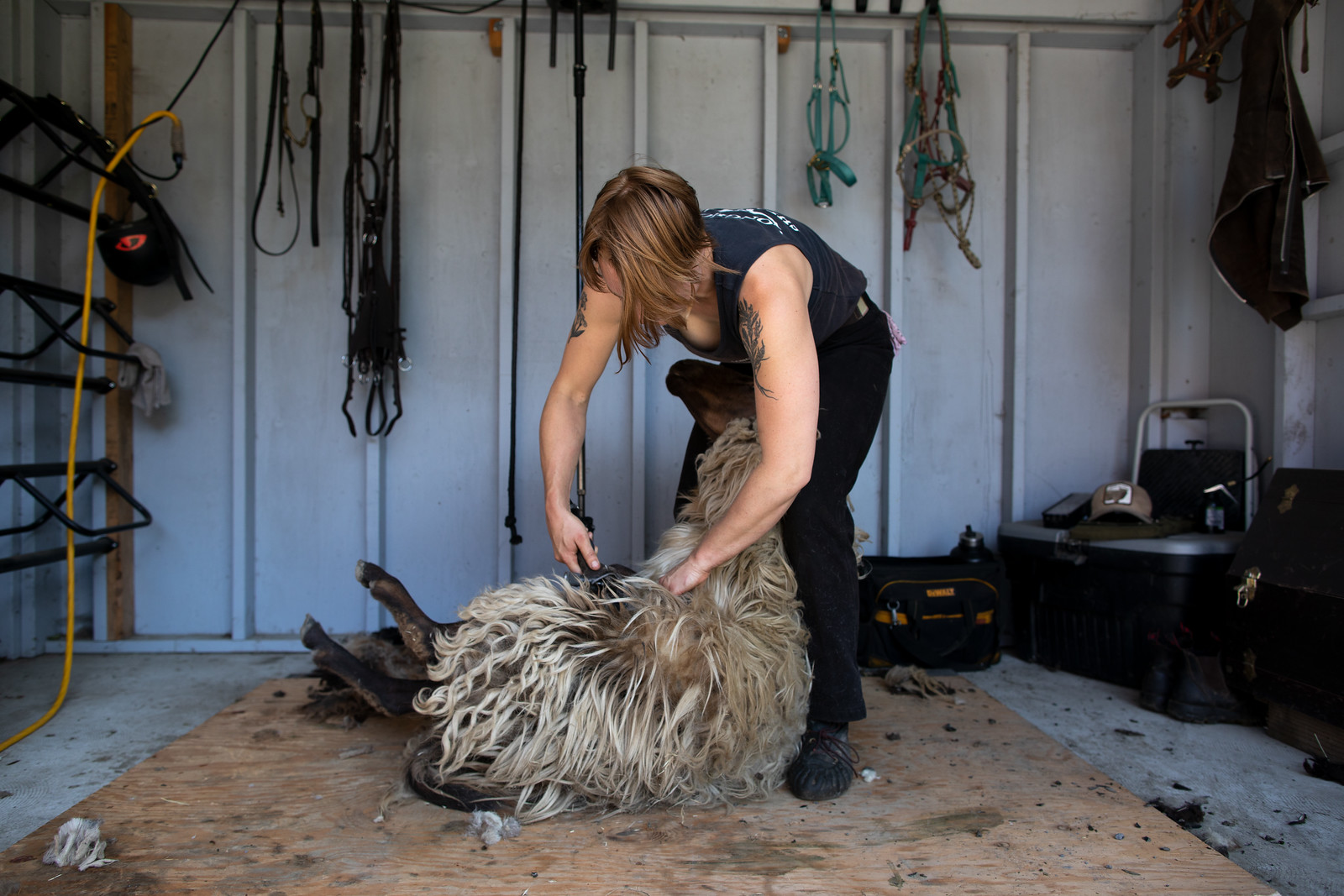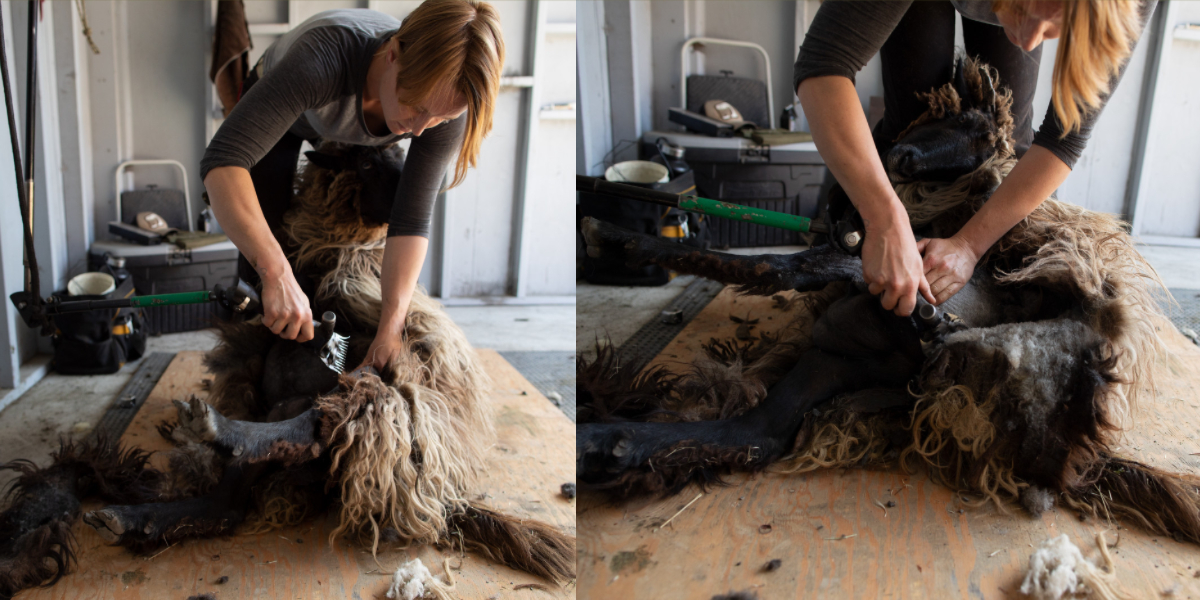The time-honored tradition of shearing sheep is a mutually beneficial process for both sheep and people. For sheep, an annual shearing is essential for their overall health and wellbeing. For people, shearing sheep connects us to these animals and provides us with wool that sheep no longer need so that we can produce garments and goods.
Just as we might seek out information about how our food is processed and prepared, we should also seek to understand how our garments are processed. How do we get from soil to skin, raw fiber to finished clothing or goods? What is the impact of this process on the environment and our communities? To shed light on this process and its implications, we rounded up three articles by Fibershed Producer, Marie Hoff, that help to educate, demystify, and describe the sheep shearing process. Continue reading to learn more about the fascinating history and process of shearing sheep.

Shedding Light on Sheep Shearing
As the clothing and textile industry has become more distanced from the source of natural wool and fiber materials, we have found that information describing the shearing process has become increasingly inaccessible. Sheep shearing is a necessity for the sheep and provides the raw material for goods and garments. Shearing sheep also directly connects producers to these special animals. The professionals that shear sheep have incredible knowledge and skills about the gentle choreography required to respectfully and humanely remove the wool.
From Fleece to Garment: Get Familiar with the Shearing Process
All articles in this series were written by Marie Hoff, including summary excerpts.
Part 1: Shearing & Welfare: Why are Sheep Sheared?

What does it mean to shear a sheep and why do sheep need to be sheared? Start here to learn more about the history and context of shearing.
Shearing is crucial to sheep’s health, as a large animal veterinarian will tell you. Dr. Jen Burton, a vet with 10 years of experience specializing in the health and welfare of sustainable livestock, explains “I can’t imagine a veterinarian suggesting that wool be left to grow on a domestic sheep, because that would put the animal at risk for overheating, discomfort and disease. The animal would also be at increased risk for skin disease and parasites. Over time, unshorn wool could eventually impede movement.” Sheep can overheat and die in the summer months if not shorn, and become the target for parasitic species such as ticks, lice, mites, and the maggots that cause fly strike, a gruesome and even deadly condition. Shearing provides both prevention and treatment of any of these infestations.
Continue reading Shearing & Welfare: Why are Sheep Sheared?
Part 2: Inside the Shearing Shed with Kinkade Shearing

In Part 2, we take a behind-the-scenes look at the gentle choreography of shearing and one sheep shearer’s journey to studying and perfecting the process.
Shearing sheep is not only about learning specific movements and using a shearing machine, it’s also about relationships and decision-making. Power dynamics between people, and between people and animals, can be a daunting challenge. But from that challenge emerges a goal: to shear a sheep so that it will be healthy, and so people can make use of the wool that the sheep no longer needs during the summer.
Continue reading Inside the Shearing Shed.
Part 3: Choreography and Skill: How Sheep are Sheared

Learn from the experts in Part 3 about the precision and skill required to shear sheep.
The mark of an experienced shearer is that the sheep are calm. And sheep are calm if they are held comfortably, with weight off their tailbone, spine organized in spiral or S-curve positioning, and a firm squeeze to hold their shoulders in place.
Another practice that people often find surprising is when sheep are dragged on their rear to move them into place for shearing. But once you learn to do it, you realize it doesn’t strain the animal, and is an ergonomic way to move a 150-250 pound animal a short yet exact distance.
Continue reading Choreography and Skill: How Sheep are Sheared.
The process of shearing sheep requires craftsmanship and skill that can easily go unnoticed when confronted with a wool garment in its final form. Recognizing the journey that our clothing and garments take from raw fiber to finished product is essential for improving the clothing system. To continue learning more about the wool industry, in particular, explore our related blog posts. We also encourage you to explore our network of Fibershed producers to connect with farmers, ranchers, designers, sewers, weavers, knitters, felters, spinners, mill owners, and natural dyers living and working within 51 counties in the North and Central regions of California.
Images by Paige Green
